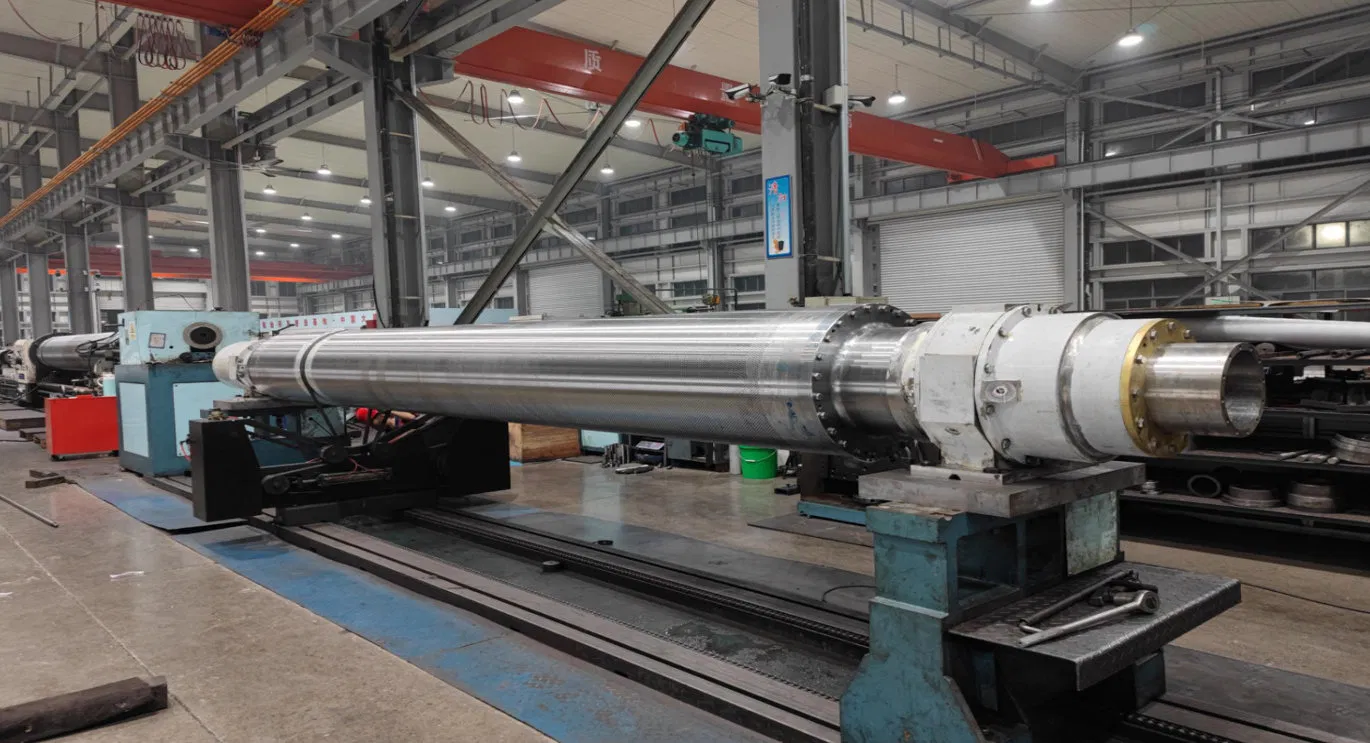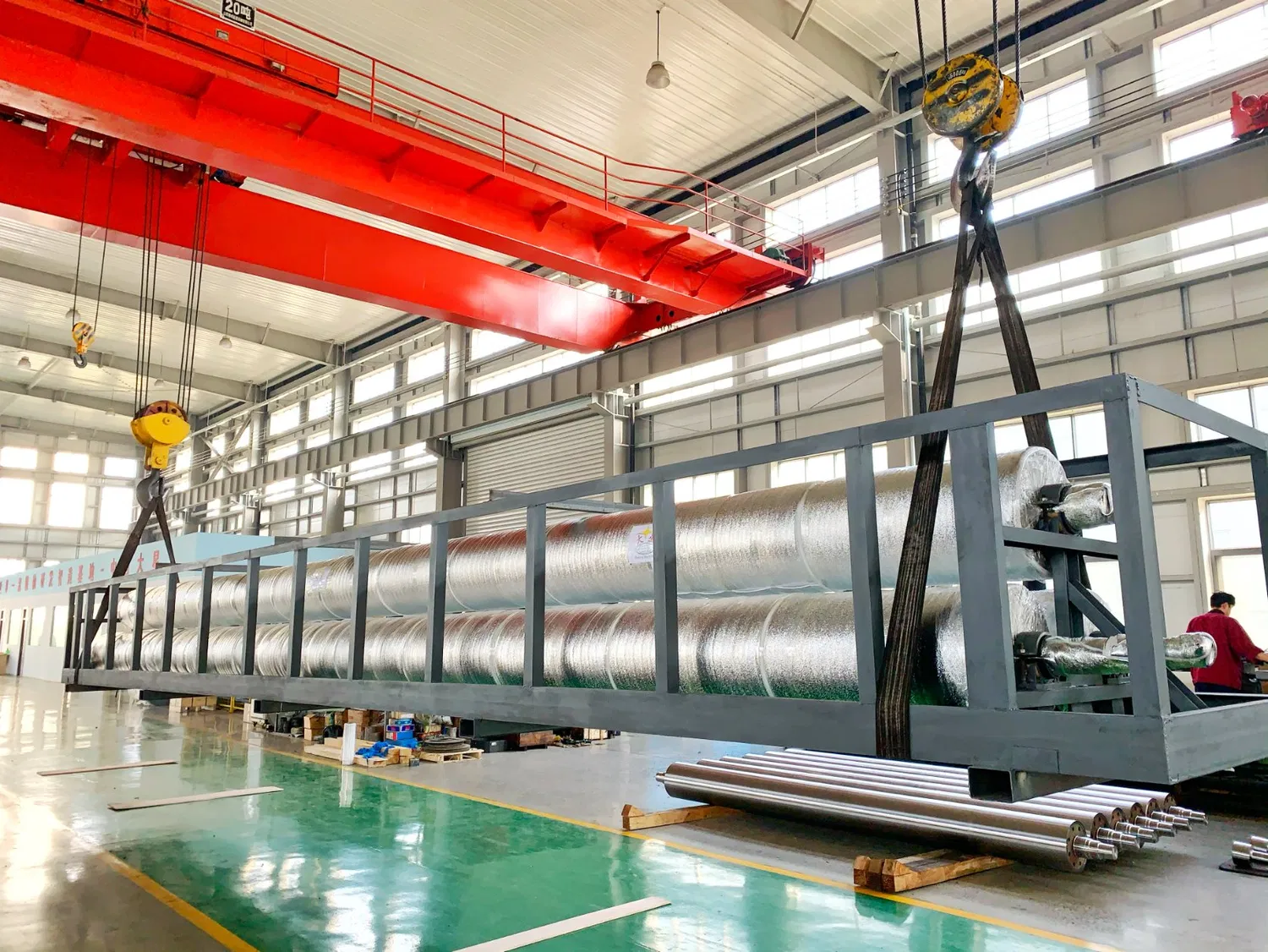Have you ever stopped to think about the sheer mechanical force and precision required to turn a slurry of pulp and water into a perfectly uniform sheet of paper? In the heart of every paper machine lies a section that does the heavy lifting, a place where immense pressure is key. This is the press section, and its workhorses are the press rolls. To be honest, the performance of these massive, cylindrical components can make or break a mill's profitability. This article is your comprehensive guide to understanding bulk press rolls for paper mills, exploring everything from their fundamental design to the advanced technologies shaping their future.
We'll dive deep into the mechanics, materials, and maintenance strategies that define a high-performing press section. Whether you're an engineer, a maintenance manager, or a procurement specialist, understanding the nuances of these critical assets is paramount for improving sheet quality, reducing energy consumption, and maximizing your operational uptime.
The Anatomy of a Press Roll: More Than Just a Cylinder
At first glance, a press roll might seem like a simple, massive steel cylinder. But that perception couldn't be further from the truth. It's a highly engineered component, with each part playing a crucial role in the dewatering process. Let's break it down.
Core and Shell Construction
The foundation of any press roll is its core, or body. This is typically made from materials like cast iron, forged steel, or even granite in older machines, chosen for their immense strength and rigidity. The core must withstand incredible operational loads without deflecting, as even a microscopic bend can lead to uneven pressure distribution and defects in the paper sheet. The journals, or ends of the roll, are precision-machined to fit into the machine's bearings, allowing for smooth rotation at high speeds.
Press Roll Coverings: The Unsung Hero
Frankly speaking, the roll covering is where the magic happens. This outer layer is what makes direct contact with the paper sheet and the felt, and its properties directly influence dewatering efficiency and roll lifespan. The choice of covering material is one of the most critical decisions in press roll specification.
- Rubber: A traditional and versatile choice, rubber coverings offer good elasticity and durability. Different rubber compounds can be formulated to resist heat, chemicals, and abrasion, making them suitable for a wide range of paper grades.
- Polyurethane: Offering superior abrasion resistance and load-bearing capacity compared to rubber, polyurethane covers can often run longer between regrinding intervals. They provide excellent bond strength and maintain their hardness under pressure.
- Composites: The cutting edge of covering technology. Composite materials, often incorporating ceramics or other advanced polymers, provide exceptional wear resistance and can maintain a stable surface profile for extended periods. They are a significant investment but can offer a substantial ROI in high-demand applications.
The right covering ensures the creation of a uniform, effective nip—the point of contact where water is squeezed from the sheet.

Types of Press Rolls
Not all press rolls are created equal. Their surface design is tailored to specific functions within the press section. The most common types include:
- Plain Rolls: Solid, smooth-surfaced rolls that rely purely on pressure.
- Suction Press Rolls: These rolls have a perforated shell connected to an internal vacuum box. The vacuum helps pull water from the sheet and felt, significantly improving dewatering. Proper suction press roll maintenance is critical to prevent clogged holes and ensure consistent performance.
- Grooved Rolls: These feature fine grooves cut into the surface. The grooves provide a channel for the pressed water to escape the nip, preventing it from being reabsorbed by the sheet.
- Blind-Drilled Rolls: Similar to grooved rolls, but instead of continuous grooves, they have thousands of small holes drilled into the cover that don't go all the way through. These holes act as mini reservoirs to hold water until it can be thrown out by centrifugal force.
The Science of Water Removal: Nip Dynamics and Press Configurations
The primary goal of the press section is to remove as much water as possible mechanically, as this is far more energy-efficient than evaporating it in the dryer section. This is all achieved through the "nip," the small contact area between two rotating rolls where the paper sheet and felts are squeezed.
Understanding Nip Pressure and Dwell Time
It's a delicate balancing act. Nip pressure refers to the force applied per unit area in the nip. Higher pressure generally means more water removal. However, too much pressure can crush the paper fibers, reducing sheet strength and quality. Dwell time is the duration the paper spends inside the nip. A longer dwell time allows more water to be squeezed out. These two factors are interconnected. A wider nip (achieved with larger diameter rolls or softer covers) can increase dwell time without excessively high peak pressures. Many experts agree that optimizing this relationship is key to modern papermaking.
Common Press Section Configurations
The arrangement of press rolls dramatically affects performance. Early machines used simple single-nip presses. Today, configurations are far more complex to maximize efficiency.
- Double-Nip Press: Often features a central roll that forms two separate nips with rolls above and below it. This allows for two pressing events in a compact space.
- Tri-Nip Press: A common configuration that uses a suction pickup roll and two other presses to guide the sheet through three nips without open draws, which is crucial for preventing sheet breaks with weaker paper grades.
- Extended Nip Press (ENP): This is a game-changer in the industry. Instead of two cylindrical rolls, an ENP uses a large roll and a concave "shoe." This creates a much wider nip—up to 10 times wider than a standard roll press. This is where jumbo press roll technology comes into play, as these systems require very large, robust rolls. The extended dwell time allows for significant water removal at lower peak pressures, which is especially beneficial for producing linerboard and other heavy grades.
Selecting the Right Bulk Press Rolls for Your Paper Mill
Choosing the correct press rolls is a major capital investment, and getting it right has long-term implications for your mill's success. It's not a one-size-fits-all decision. When sourcing bulk press rolls for paper mills, a thorough evaluation of your specific operational needs is essential.
Key Factors for Consideration
Before you even speak to a supplier, you need to have a clear picture of your requirements. Here are the critical factors to consider:
- Paper Grade: The type of paper you produce is the number one determinant. Fine printing paper requires a smooth surface to avoid marking, while heavy-duty cardboard needs maximum water removal and can tolerate a more aggressive press.
- Machine Speed and Width: Higher speeds and wider machines place greater mechanical stress on the rolls. They must be dynamically balanced to perfection to avoid vibration, and their construction must be robust enough to prevent deflection across a wide span.
- Required Nip Loading: The target nip pressure (measured in pounds per linear inch or kilonewtons per meter) will dictate the roll's structural requirements and the type of covering needed.
- Chemical Environment: The pH levels, cleaning chemicals, and additives used in your process can degrade certain roll-covering materials. You must choose a cover that is chemically compatible with your system.
- Budget and Expected ROI: While upfront cost is always a factor, it's worth noting that a cheaper roll that requires frequent maintenance or causes downtime can be far more expensive in the long run. A high-quality, durable roll is an investment in productivity.
The Importance of Customization
While some standard rolls exist, the best results often come from a customized approach. A detailed discussion with a roll manufacturer about your specific machine and paper grades is invaluable. This is where the intricacies of paper machine press roll design become critical. A supplier can help you fine-tune everything from the core material and shell thickness to the precise rubber or polyurethane compound for the cover, ensuring the roll is perfectly optimized for your application.

Maintenance and Longevity: Protecting Your Investment
Once your new press rolls are installed, the job is far from over. A proactive maintenance strategy is crucial to protect your investment, ensure consistent paper quality, and prevent catastrophic failures. In my experience, mills with the best maintenance programs suffer the fewest unplanned shutdowns.
Routine Checks and Best Practices
Regular inspections are the cornerstone of press roll maintenance. This includes looking for surface damage like cuts, cracks, or pits in the cover. Bearing temperatures and vibrations should be monitored continuously using modern sensor technology. Keeping the rolls and surrounding areas clean is also surprisingly important, as debris can get caught in the nip and damage the roll cover or the felt.
The Role of Grinding and Recrowning
Over time, a press roll cover will wear down. This wear is rarely uniform, leading to an uneven roll profile. To counteract this, rolls must be periodically removed from the machine and reground. During this process, a thin layer of the cover is removed to restore a perfectly cylindrical shape. Most importantly, the roll is often "crowned"—ground to have a slightly larger diameter in the center than at the ends. This crown compensates for the slight bending of the roll under the immense pressure of the nip, ensuring that the pressure is uniform all the way across the paper sheet. An incorrect crown is a common cause of moisture profile issues.
Troubleshooting Common Press Roll Issues
Being able to diagnose problems quickly can save you a lot of headaches. Here are a few common issues:
- Vibration: Can be caused by improper balancing, bearing failure, or an out-of-round roll. It can lead to barring (periodic marks on the sheet) and damage to machine components.
- Sheet Marking: Often caused by damage to the roll cover or by clogged holes/grooves that prevent water from escaping the nip properly.
- Uneven Moisture Profile: This is the classic sign of a worn crown or improper nip loading, resulting in a sheet that is wetter on the edges or in the center.
- Cover Delamination: A serious failure where the cover separates from the roll core. This can be caused by chemical attack, overheating, or a manufacturing defect.
The Future of Press Roll Technology and Conclusion
The world of papermaking is constantly evolving, and press roll technology is no exception. We're seeing exciting innovations that promise even greater efficiency and control. "Smart rolls" with embedded sensors are becoming more common, providing real-time data on nip conditions, temperature, and vibration directly from the source. Advanced composite materials are being developed that offer unprecedented wear resistance and stability, pushing the boundaries of machine speed and performance.
Ultimately, the press section remains the heart of the paper machine's dewatering process. The selection, operation, and maintenance of your rolls have a direct and profound impact on your final product and your bottom line. By understanding the intricate details of their design and function, you can make informed decisions that will pay dividends for years to come.
Choosing the right bulk press rolls for paper mills isn't just a purchase; it's a strategic decision that underpins the efficiency and quality of your entire operation. By focusing on a holistic approach that considers everything from initial design to long-term maintenance, you can ensure your press section is a source of strength, not a bottleneck.
For more detailed information, please visit our official website:Bulk press rolls for paper mills
About the author: John Carter is a mechanical engineer with over 20 years of experience in the pulp and paper industry. He specializes in paper machine optimization, with a deep focus on press section dynamics and advanced roll technology. John has consulted for mills across North America, helping them improve efficiency and product quality through data-driven maintenance strategies and equipment upgrades. He is passionate about sharing his expertise to help the industry thrive.


